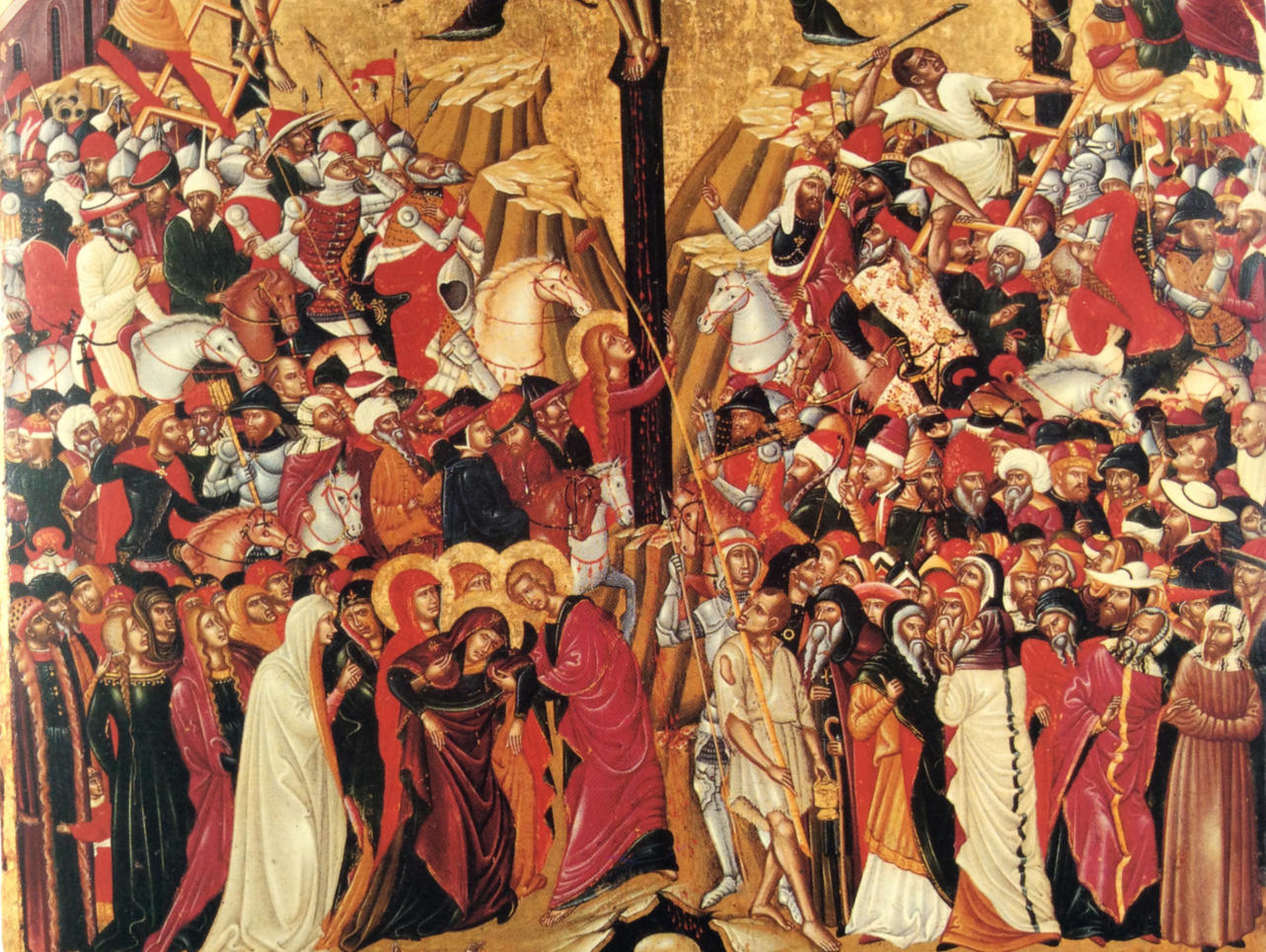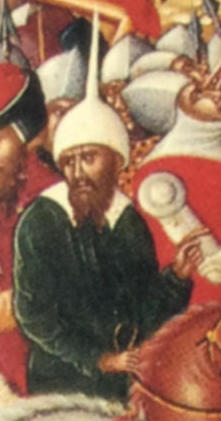
Create an Amazon Business Account
A detail of the crowd in
The Crucifixion, by Andreas Pavias
Crete, second half of the 15th century

A larger detail of the crowd in The Crucifixion, by Andreas Pavias, Crete, 15th century


Pavias Andreas (ca 1440 - between 1504-1512)
The Crucifixion, second half of the 15th century
Egg tempera on panel, 83.5 x 59 εκ.
Alexandros Soutzos Bequest, Αρ. έργου (=Number of the painting): Π.144
Andreas Pavias was one of the most important painters at Irakleion, Crete (under Venetian dominion), in the second half of the 15th century. His contemporaries appreciated his work and this is demonstrated by the fact that he is mentioned as a "magister", as teacher of art and of letters.
Greek National Gallery
An interesting issue is how the last defenders of Constantinople were dressed and what kind of weapons they used. An interesting icon of 1450 AD, by Andreas Pavias, preserved in the Church of St. Paraskevi at Gheroskipou, shows warriors at the Crucifixion of Our Lord equipped in a mixed Balkanic-European and Turkish style. Two cavalrymen are armed with big polygonal winged maces (ibidem, Figs. 987-988). This precious icon can give a real answer to the last appearance of the last defenders of the Roman Empire, or at least to the appearance of the Greek elite fighting for the Latin rulers of Cyprus in the middle of the 15th c. AD.
Source: p. 31, "The War-Mace Of Byzantium, 9-15 C. AD. New Evidence From The Balkans In The Collection Of The World Museum Of Man, Florida" by Raffaele DíAmato in Acta Militaria Mediaevalia VII
One horseman on the left is shown as pitch black, the man with sponge and the man on the right hand ladder appear to be African. A prominent figure at right centre has a Mamluk fluffy red zamṭ hat. A few other zamṭs can be seen in the crowd.
Two armoured men (upper-left and centre) have pteruges at their shoulders. These are probably portraying Greeks. Others dressed similarly without pteruges may be as well, but could be Venetians.

The most heavily armoured men with closed helmets may be Venetians or similar westerners. Others are less well armoured in brigandines buckled at the front or back.
The figure that probably represents the centurion has plate leg and arm harness with gauntlets and sabatons and a sallet with a turban around it.
At upper left appears a tartar in a red hat with a split pointed brim. To his right is a hemispherical red cap with a point. In front and to the left of these is a horseman in a hemispherical white cap with a long point. This type of hat may fit a description by Doukas of Ottoman hemispherical caps with a point a hand-span high, red for turks and white for the Sultanís servants. Another white cap can be seen at far right.


Just to the left of the base of the cross, a horseman wears a hat with a ribbed crown with similarities to the Byzantine Emperor John VIII Paleologusí hat by Pisanello, but here it is given a split brim.